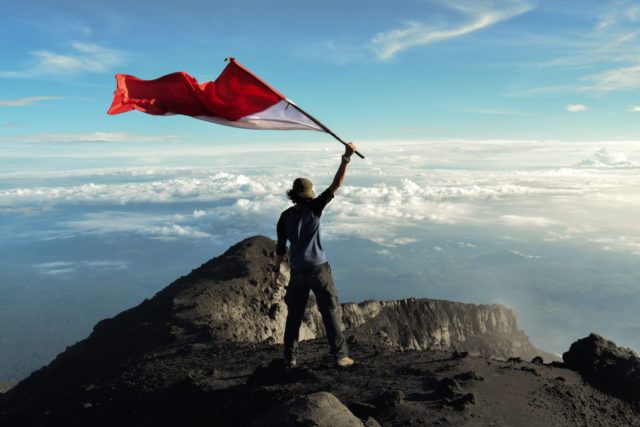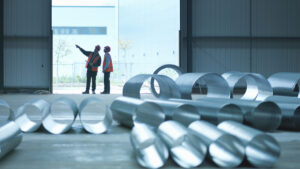- Indonesia ramping up efforts to establish a nickel-based EV battery supply chain, Benchmark Minerals Intelligence says
- Growth in Indonesian nickel supply has put downward pressure on prices in the past
- Battery nickel prices topsy turvy as LME short squeeze hurts buyer sentiment
Australian nickel producers and explorers have always projected a sense of comfort about the green energy transition, confident in the knowledge class 1 nickel sulphides mined here are the dominant source of nickel for the battery market.
While batteries made up just 12% of nickel demand last year, with 70% of the market still dominated by stainless steel producers, it is likely to be the primary source of growth for nickel demand in the decades to come.
That would seem to deliver a long-term advantage for western nickel producers in Australia and Canada who produce nickel sulphides.
But Indonesia, a bogey nation for nickel pricing after its China-backed development of cheap nickel pig iron projects caused global oversupply in the mid 2010s, is making ever stronger noise about adapting its nickel laterite mines to produce product for the battery market.
Major nickel producers like China’s Huayou Cobalt and Tsingshan have started nickel matte and HPAL projects in Indonesia in recent times in response to calls from Joko Widodo’s Government to develop an EV battery supply chain in the south-east Asian nation, using similar levers to the export ban introduced in 2014 to stop companies shipping raw nickel ore to China.
According to Battery Minerals Intelligence in its latest update on the market for battery grade nickel products, more moves are afoot in Indonesia to expand its share of the battery nickel market.
This has all been ticking along quietly while investors have been consumed with the epic nickel short squeeze seen in March and the impact of major nickel supplier Russia’s war in Ukraine.
“The Indonesian government has made no secret of its ambitions to build out a domestic end to end battery supply chain, having banned the export of nickel ore in 2014 and 2020 to stimulate investment in downstream nickel processing and bring value-added production into the country,” BMI said.
“The government also announced in January it was considering the imposition of a progressive tax on nickel exports, beginning with a 2% tax rate for ferronickel (FeNi) and nickel pig iron (NPI), which in turn would include nickel matte, to further encourage downstream investments.
“Indonesia is already the world’s largest nickel producing country, supplying over 950,000 tonnes nickel contained in 2021, over 35% of global production.
“This output is expected to triple by 2030, underscoring the Indonesian government’s desire to drive further investment into the midstream nickel supply chain in order to maximise the country’s revenues from their increasingly utilised natural resources.”
New projects announced in Indonesia
They include a potential US$6 billion investment in an integrated mining to battery project announced by Chinese battery producer CATL, Indonickel miner Antam and Industial Baterai Indonesia in the FHT Industrial Park in East Halmahera, followed shortly by an announcement from Korea’s LG Energy Solutions that it was leading a consortium into a US$9b integrated battery project.
ESG doubts had crept in after Sumitomo, operator of successful HPAL operations in the Philippines pulled out of the Pomalaa HPAL project in Indonesia citing Covid delays.
“Its withdrawal therefore was unexpected across the industry, with some industry participants questioning the potential ESG credentials of the planned plant,” BMI said.
But Vale’s Indonesian subsidiary quickly signed a non-binding MoU with Huayou in late April for the development of an HPAL facility, a style of processing used at the Murrin Murrin and Ravensthorpe mines in WA to produce high quality nickel products from difficult lateritic deposits.
“The agreement stipulates Huayou will construct and run the facility, whilst Vale will have the right to acquire up to a 30% ownership share of the project,” BMI said.
“The project had originally been slated to begin operations in 2026, with a capacity of 40,000tpa of nickel contained in MHP (mixed hydroxide). However, Huayou’s involvement in the project is likely to see this timeline accelerate, with the project’s potential capacity also being increased up to 120,000tpa of nickel.”
What impact will Indonesia’s rise have on the Australian market?
Australian nickel miners are enjoying extremely good price conditions for their offtake.
Prices soared to US$100,000/t briefly in March in an epic short squeeze that battered confidence in the London Metals Exchange before it quickly reset prices to the previous days (already extraordinary) close of US$48,033/t.
They have traded in excess of US$30,000/t ever since, prices not seen since before the GFC.
Good news for a handful of local producers like Western Areas (ASX:WSA), which was able to increase the price for its $1.2 billion odd cash sale to IGO (ASX:IGO) and mine lower grade material that may have been previously uneconomic at its Forrestania nickel mine.
The price run is great timing for Mincor Resources (ASX:MCR) too, which should see the first concentrate produced this quarter by its offtake partner BHP (ASX:BHP) at the Kambalda nickel concentrator after announcing this week the first ore from its restarted Kambalda nickel operations had gone through the plant.
Could Indonesia’s push into the battery space harm the supply-demand dynamics that have supported higher nickel prices in 2022?
There are two reasons Australian producers are likely to maintain their advantage with offtakers.
Firstly, sustainability and carbon emissions. The average carbon footprint of NPI nickel is 5-10 times higher than producing nickel sulphate from nickel sulphide, erasing sustainability gains made by driving an electric vehicle.
“It’s a challenge — there will be enough nickel units, but whether there is enough sustainable units, that’s a tricky question,” Joni Lukkaroinen the boss of Finnish nickel producer Terrafame told S&P Global.
Then there’s the need for all forms of nickel to supply the growing EV industry.
In new report by KJ Leuven for Eurometaux, researchers said demand for nickel globally could grow 3,800,000-4,700,000t by 2030, and up to 6,000,000-9,000,000t by 2050. The total nickel market has been just 2.5Mt in recent times.
Clearly we’ll need all we can get.
What about battery nickel today?
Despite the need for nickel products for the EV sector, battery nickel prices joined other commodities in being challenged by China’s Covid lockdown.
Mixed hydroxide payables to LME prices fell 23.9% month on month to 68.5% accordin as new pricing methods were brought in following a loss of confidence in the LME contract following the short squeeze.
“Going forward, MHP pricing could experience further disruption as more companies make the move away from payables to the LME,” BMI said.
“However, if LME cash settled prices do return to a level which customers deem to reflect market conditions, there may be a return to the LME/payable pricing method.”
Nickel sulphate prices rose 5.8% in China, reflecting high costs for raw materials from the LME price squeeze and limited production in China due to Covid restrictions.
Negative sentiment effected prices outside China as well, with the nickel sulphate premium over LME prices falling 6.2% MoM to US$1900/t and prices overall slipping 10.5% to US$7850/t.
“Looking forward, international sulphate prices are expected to remain rangebound, although spot activity may increase as buyers begin to restock following a prolonged period of limited spot activity in the market,” BMI said.
Nickel miners share prices today:
You might be interested in












